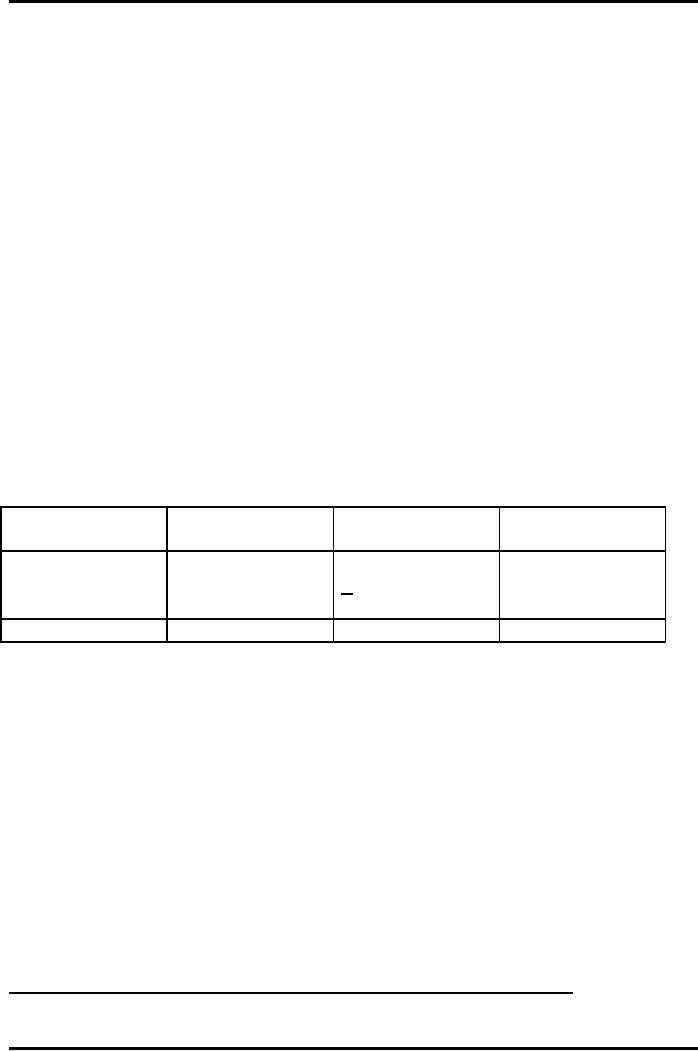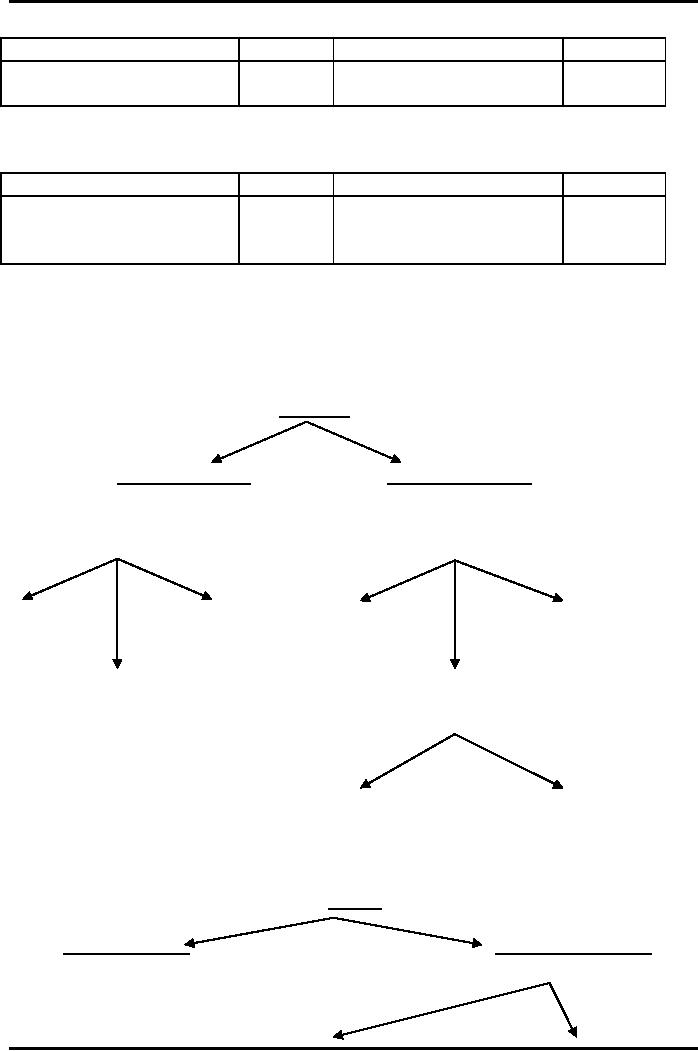 |
COMPANY ACCOUNTS 1 |
| << Partnership Accounts Changes in partnership firm |
| COMPANY ACCOUNTS 2 >> |

Advance
Financial Accounting
(FIN-611)
VU
LESSON
# 20
COMPANY
ACCOUNTS
How a
company differs from other
organizations? This is the
question that will make
able
the students/readers to understand
company accounts. In the
upcoming section
of
this chapter emphasis will be put on
the points of difference form
accounting
perspective.
Company
style of business entity is a
bigger setup comparing with
the sole
proprietorship
and partnership. People with business
ideas join their hands
with
people
having money. Jointly they form a
business in which the investors
(normally)
do no
take interest in the day to day
management affairs.
Salient
Features of Limited Liability
Companies
Following
are the salient features
that make a limited
liability company different
from
other
business entities.
1)
Separate legal
entity
Unlike
sole proprietorship and Partnership
organizations the Company
style of
business
is an incorporated organization that
enjoys a separate legal
entity. It means
that
from the legal point of view
company and owners of the
company are two
different
persons.
This
concept is often confused with
the "Business entity
concept" which is merely an
accounting
concept and is used to record
financial information of an entity.
Whereas,
"Separate
legal entity" signifies that a
company has a legal status
and it can sue and
can
be sued in its own
name.
2)
Limited liabilities
Owners
of a Company style of business
enjoy an advantage that if a
company runs
into
financial difficulties, they cannot be
forced to make further contributions to
the
company.
Even they are not asked to
make good any financial
losses suffered by
the
company.
Liabilities
of the owners of a company
are limited to the amount of
paid up share
capital
(amount contributed by them). Maximum
risk exposed to an owner of a
company
is the loss of contributed
capital money.
3)
Board of directors
Management
affairs of a company are run by a
board of directors that is
elected or
appointed
by the owners. The board of
directors runs the company on
behalf of its
owners,
in a way it can be said that
directors act like
stewards.
Directors
are responsible for decision
making, for running day to day business
affairs,
for
managing financial
issues.
91

Advance
Financial Accounting
(FIN-611)
VU
4)
Sources of finance
Like
other business organizations a
company also gets its
finances from owners and
lenders
but the circle of its owners
and lenders is very large.
5)
Capital from
owners
At
the time of its
incorporation the company
makes an estimate of the
total amount of
capital
that will be required in the
business. This capital is
split into shares and
hence
is known as
share capital. People
(investors) who want to become owner of
the
company
contribute in the share
capital. Contributors of the
share capital are
known
as
share holders or members of
the company. A limited
liability company is jointly
owned by
its members.
6)
Borrowings from
lenders
Large
business projects are
undertaken by the company
style of business which
need
huge
amount of finance. Such financial
requirements are often
cannot be met with the
contributed
share capital alone. For
this purpose a company
borrows finances from
the
financial
institutions (like Banks
etc.) and also a company can
borrow from public in
general
by issuing loan/debenture certificates.
Holders of these certificates
are known
as
debenture holders.
7)
Legal formalities
Company
style of business entity
undertakes huge ventures
that involve contracts
with
suppliers, customers, lender and so many
other concerns. Also it has
large
number of
share holders. This might
create certain difficulties to
the management and
to
the related parties as well.
Therefore incorporation of Limited
Liability Company
requires
certain legal formalities and is
tied up in more tight regulations to run
the
entity,
which are not required to be abided by
the sole proprietorship and
partnership
style
of business entities.
8)
Reporting requirements
As a
limited liabilities company is involved
in transactions with a huge number
of
stake
holders, therefore its
directors are required to
publish and circulate
financial
statements
with regular intervals which may be a
quarter, six months or a
year,
depending
upon the nature of the
company.
Finances
of a Limited Liability
Company
A
company gathers its finances
from two sources:
1. Owned
Equity
2.
Borrowed Equity
92

Advance
Financial Accounting
(FIN-611)
VU
1)
Owned Equity
Owned
equity comprises of:
a)
Equity share capital
(contributed by the
member)
b)
Reserves (realized/unrealized
profits)
i.
Capital
Reserves
Share
premium (unrealized profit)
Revaluation
reserve (unrealized
profit)
Capital
redemption reserve (realized
profit)
ii.
Revenue
Reserves
Retained/Accumulated
profits (realized
profits)
General
reserves (realized
profits)
Named/Specific
reserves (realized
profits)
o Plant
replacement reserve
o Dividend
equalization reserve
All of
the categories mentioned
above will be discussed in details
along with
accounting
entries in the forthcoming
part of this chapter.
Following table will help
in
understanding
the difference between
equities of different entities and how
owners
are
differently identified.
Sole
Partnership
Company
proprietorship
Owners'
Equity
Capital
Capital
Account Share
Capital
+ Net
profit
+
Current Account
Reserves
-
Drawings
Proprietor
Partner
Member
Owners
2)
Borrowed Equity
Borrowed
equity comprises of:
a)
Borrowings as Loan from the
financial institutions
b)
Borrowings as Debt certificates
issued to the
financers/lenders
Accounting
for Share Capital and
Reserves
Keeping
in view the rules of Dr and Cr for the
items of owners' equity,
(increase Cr.
and
decrease Dr.) the accounting
entries for the transactions
relating to the
movement
in
owners' equity are as
under:
Accounting
for issue of Share
Capital
For
issue of share capital at
nominal value (at par)
against cash
consideration:
Bank
a/c
Share
Capital a/c
93

Advance
Financial Accounting
(FIN-611)
VU
For
issue of share capital at
nominal value (at par)
against non cash
consideration:
Assets
a/c
(like
fixed assets or stock)
Share
Capital a/c
For
issue of share capital at a
premium
Bank
a/c
Share
Capital a/c
Share
Premium a/c
Share
premium
Companies
having strong background
often issue their shares at
a price that is more
than
the nominal (face) value.
Excess of the issue price
over the nominal value
is
known as
share premium.
Note:
Remember
one very important tip;
share capital a/c always
credits with its
nominal
(face) value only, any excess
received as resources will be credited to
the
share
premium a/c.
Solved
problem:
Rafi
Ltd Co issues 100,000 ordinary share
capital @ Rs 10 each with a premium @ Rs
7
per
share.
Record
the above transaction in the
books of accounts.
Working:
RS.
100,000 @
Rs. 10
1,000,000
100,000 @
Rs. 7
700,000
1,700,000
Accounting
Entry:
Bank
a/c
1,700,000
Share
Capital a/c
1,000,000
Share
Premium a/c
700,000
Ledger
Accounts:
Share
Capital a/c
Rupees
Rupees
Bank
a/c
1,000,000
94

Advance
Financial Accounting
(FIN-611)
VU
Share
Premium a/c
Rupees
Rupees
Bank
a/c
700,000
Bank
a/c
Rupees
Rupees
Share
Capital a/c
1,000,000
Share
Premium a/c
700,000
Accounting
for movements in
Reserves
Reserves
are profits that are
retained in the company (not
distributed to its
shareholders).
To understand the accounting
entries for movement in
Reserves
following
details will be very much helpful.
Reserves
Capital
Reserves
Revenue
Reserves
Those
profits which are not distributed
Those which are distributable to
share-
To
the share holders as cash
dividend
holders
as cash dividend.
Share
Capital
General
Retained
Premium
Redemption
Reserve
Profits
Reserve
Revaluation
Named/Specific
Reserve
Reserve
Plant
Dividend
Replacement
Equalization
Reserve
Reserve
Profits
Un-Realized
Profits
Realized
Profits
�
Share
Premium
Profit
after tax
�
Revaluation
Reserve
95

Advance
Financial Accounting
(FIN-611)
VU
Transfer
of profits
Part
of profit paid to
as
Reserves
share
holder
as
cash dividend
Capital
Redemption General
Named
Retained
Reserve
Reserve
Reserve
Profits
Above
diagram clearly shows that
all reserves except share premium and
revaluation
reserves
are created out of the
profits realized during the
year. We may say that
reserves
are the profits set
aside for some specific
purpose or otherwise.
Accounting
entry for
such setting aside of
profits is:
Profit
& loss a/c
Dr
Reserves
a/c Cr
A
standard format of balance
sheet of a company looks
like some what as
under:
Limited
Liability Company
Balance
Sheet
As on
December 31, 2009
Rs.
Rs.
Assets
Non
Current Assets
***
Current
Assets
***
Current
Liabilities
(***)
***
***
Financed
By (sources of finance)
Owners'
Equity
Ordinary
Share Capital
***
Reserves
Capital
Reserves
***
***
***
Revenue
Reserves
***
Non
Current Liabilities
Loan
from financial institutions
***
Loan
Stocks/Term Finance
Certificates
***
.
***
Balance
sheet shows financial
position of and entity. Upper
part of the balance sheet
shows
resources
of an entity. Lower part of the
balance sheet clearly shows
the sources of finance.
96
Table of Contents:
- ACCOUNTING FOR INCOMPLETE RECORDS
- PRACTICING ACCOUNTING FOR INCOMPLETE RECORDS
- CONVERSION OF SINGLE ENTRY IN DOUBLE ENTRY ACCOUNTING SYSTEM
- SINGLE ENTRY CALCULATION OF MISSING INFORMATION
- SINGLE ENTRY CALCULATION OF MARKUP AND MARGIN
- ACCOUNTING SYSTEM IN NON-PROFIT ORGANIZATIONS
- NON-PROFIT ORGANIZATIONS
- PREPARATION OF FINANCIAL STATEMENTS OF NON-PROFIT ORGANIZATIONS FROM INCOMPLETE RECORDS
- DEPARTMENTAL ACCOUNTS 1
- DEPARTMENTAL ACCOUNTS 2
- BRANCH ACCOUNTING SYSTEMS
- BRANCH ACCOUNTING
- BRANCH ACCOUNTING - STOCK AND DEBTOR SYSTEM
- STOCK AND DEBTORS SYSTEM
- INDEPENDENT BRANCH
- BRANCH ACCOUNTING 1
- BRANCH ACCOUNTING 2
- ESSENTIALS OF PARTNERSHIP
- Partnership Accounts Changes in partnership firm
- COMPANY ACCOUNTS 1
- COMPANY ACCOUNTS 2
- Problems Solving
- COMPANY ACCOUNTS
- RETURNS ON FINANCIAL SOURCES
- IASB’S FRAMEWORK
- ELEMENTS OF FINANCIAL STATEMENTS
- EVENTS AFTER THE BALANCE SHEET DATE
- PROVISIONS, CONTINGENT LIABILITIES AND CONTINGENT ASSETS
- ACCOUNTING POLICIES, CHANGES IN ACCOUNTING ESTIMATES AND ERRORS 1
- ACCOUNTING POLICIES, CHANGES IN ACCOUNTING ESTIMATES AND ERRORS 2
- BORROWING COST
- EXCESS OF THE CARRYING AMOUNT OF THE QUALIFYING ASSET OVER RECOVERABLE AMOUNT
- EARNINGS PER SHARE
- Earnings per Share
- DILUTED EARNINGS PER SHARE
- GROUP ACCOUNTS
- Pre-acquisition Reserves
- GROUP ACCOUNTS: Minority Interest
- GROUP ACCOUNTS: Inter Company Trading (P to S)
- GROUP ACCOUNTS: Fair Value Adjustments
- GROUP ACCOUNTS: Pre-acquistion Profits, Dividends
- GROUP ACCOUNTS: Profit & Loss
- GROUP ACCOUNTS: Minority Interest, Inter Co.
- GROUP ACCOUNTS: Inter Co. Trading (when there is unrealized profit)
- Comprehensive Workings in Group Accounts Consolidated Balance Sheet